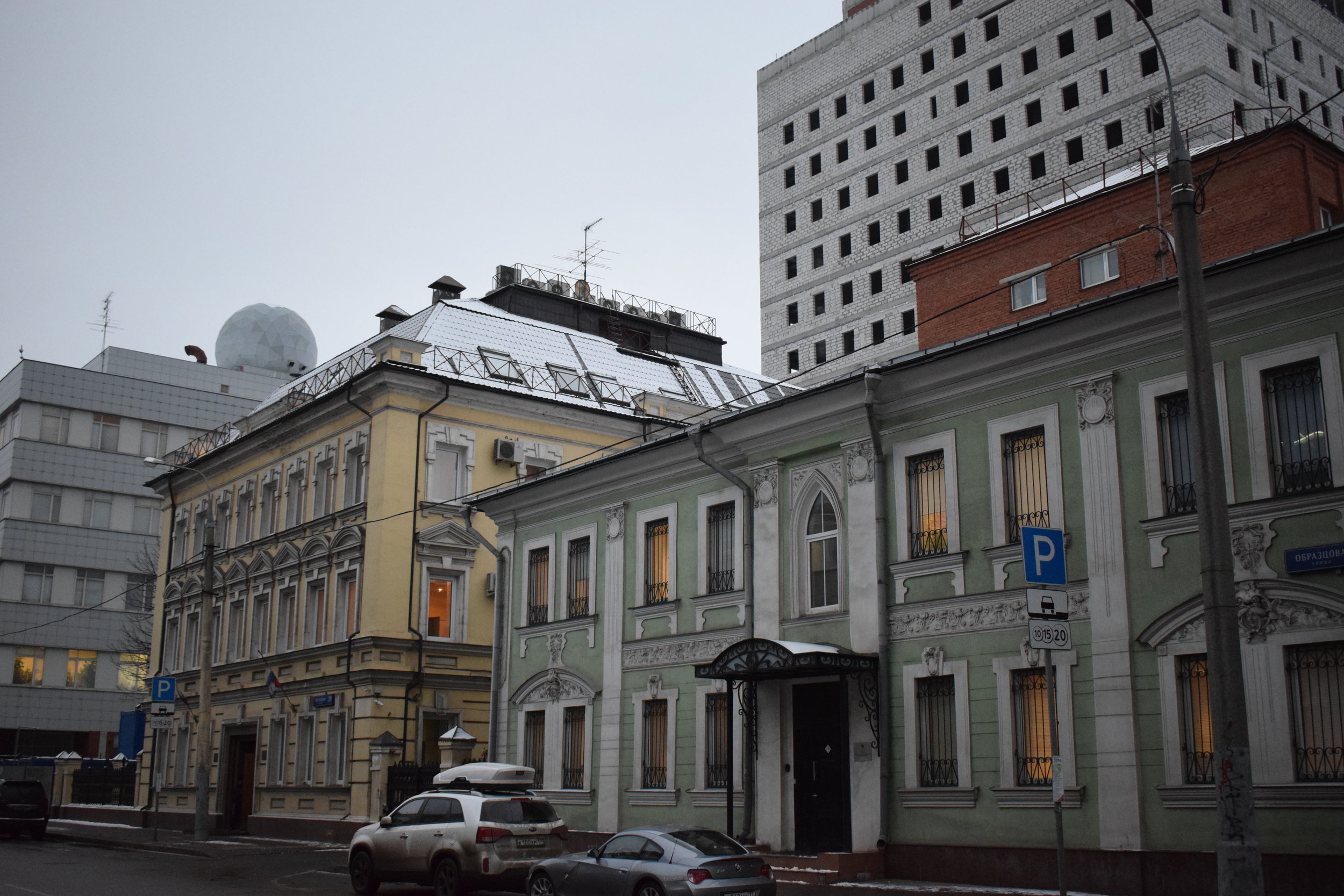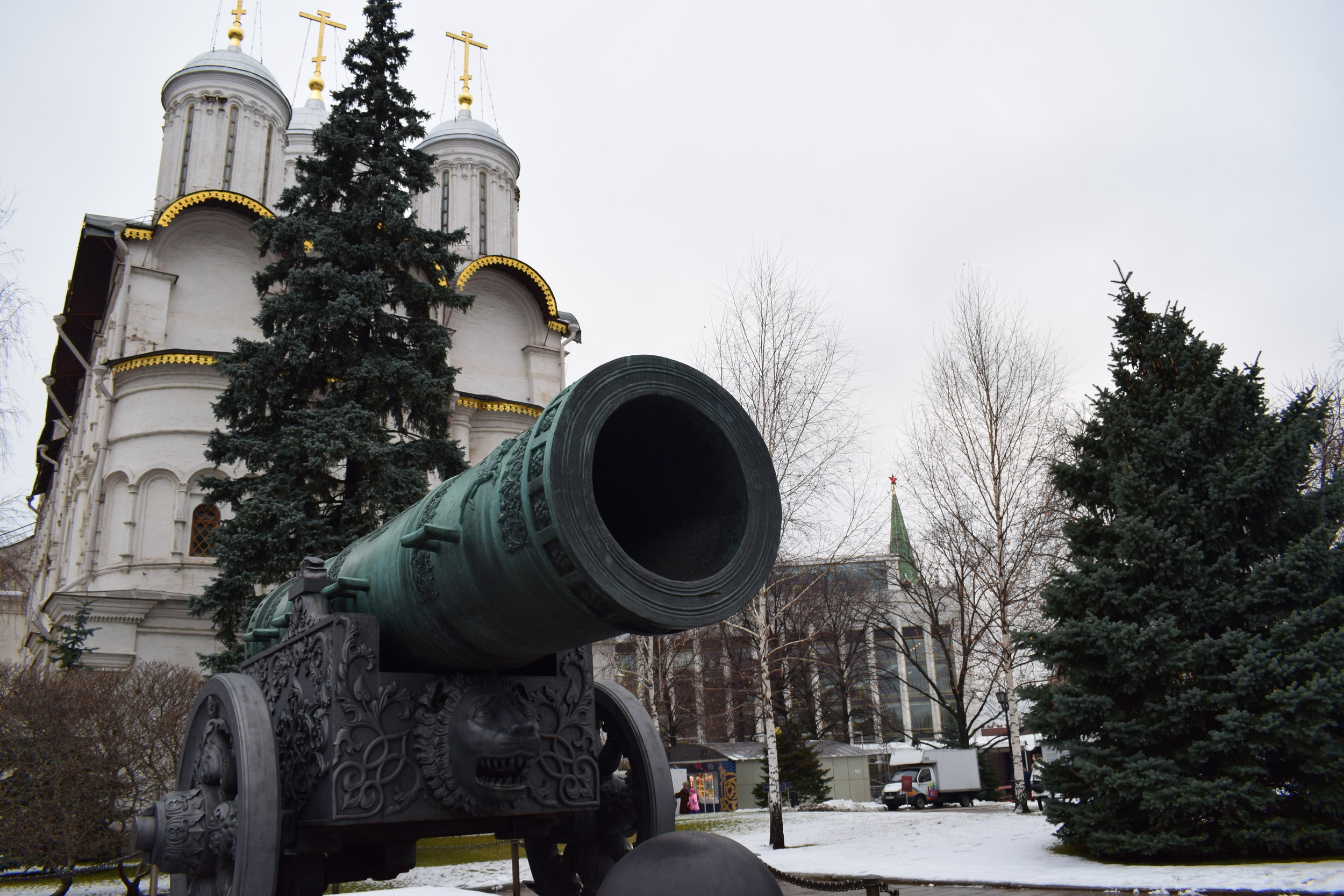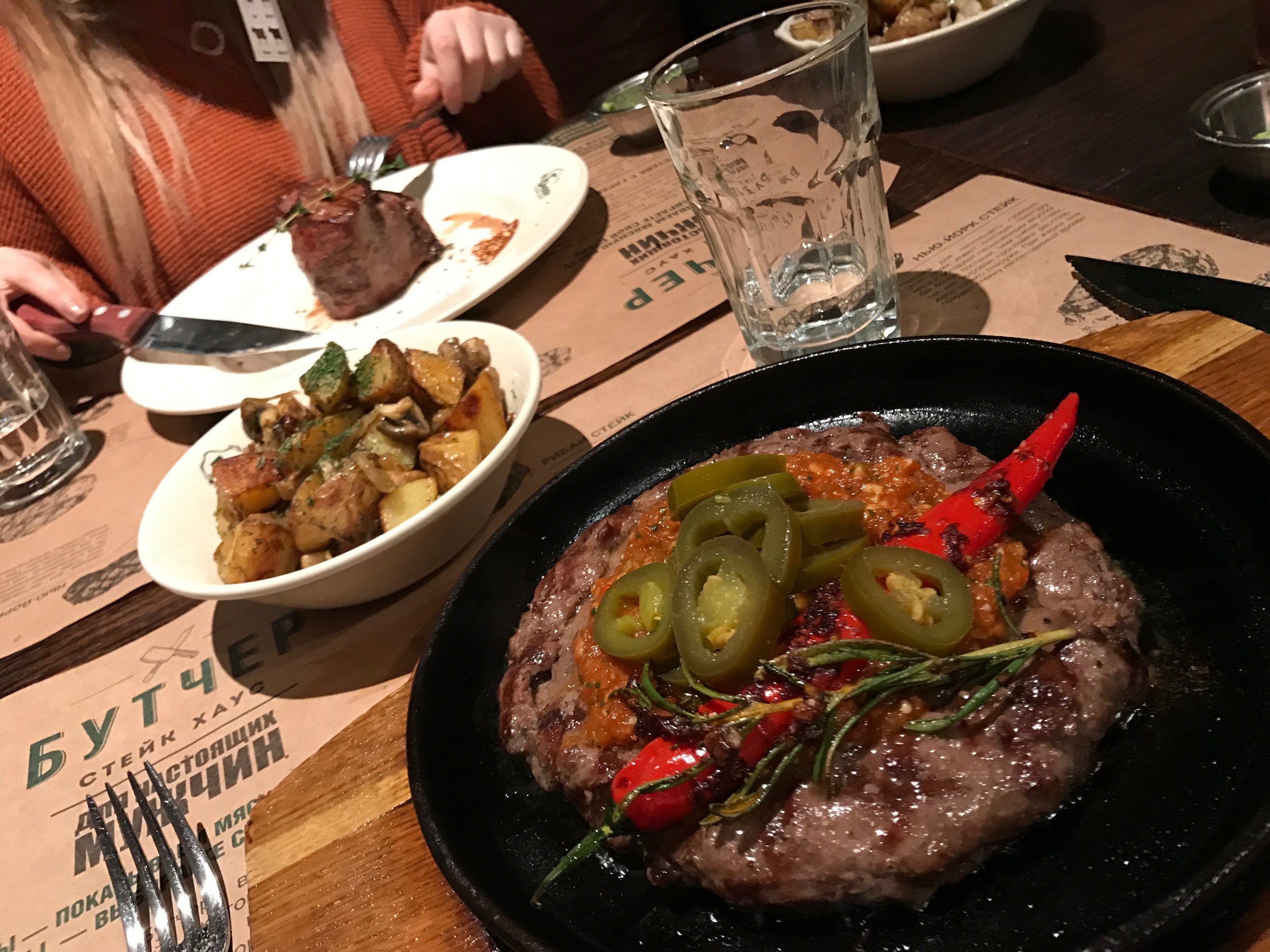Quick Travel Guide: Moscow, Russia
/MOSCOW
Country: Russia
Population: 11,920,000
Time zone: UTC +3
Closest airport(s): Sheremetyevo International Airport, Domodedovo International Airport, Vnukovo International Airport
A little bit about Moscow
A sprawling metropolis of well over 10 million people and the capital of the world’s biggest country, Moscow knows how to go big. Imposing Soviet architecture, the most billionaires in Europe and the continent’s tallest structure are all features of Russia’s fascinating capital.
With its name deriving from the Moskva River on which it sits, Moscow is a major political, economic, cultural and scientific centre, with great global influence due to its economic power and population. It is also the seat of power of the Government of Russia which is centred at the Moscow Kremlin, while also boasting several UNESCO World Heritage Sites.
Why should I go?
Moscow is one of the world’s biggest and most underrated cities. Due to an extensive and expensive visa application process, it isn’t as well travelled by the western world as the likes of nearby London, Paris, Istanbul, Barcelona or Amsterdam. Yet, ironically, this works in Moscow’s favour, because when it comes to its major sites they aren’t overrun by tourists, nor do they have ridiculously hiked up prices. Because it hasn’t been done to death like so many other cities on the continent, Moscow is a breath of fresh air and provides ongoing discovery and attractions aplenty.
But regardless of visitor numbers and footfall, Moscow is one of those destinations that gives the impression of must-see. From world-class architecture to a wealth of history and culture, this city is one that every fervent traveller has to do in their lifetime. Moscow tips its hat to a Soviet past, while putting its own stamp on European living. Parts of the city will have you travelling back in time, whilst Moscow continues to be a leading centre of politics, influence and incredible experiences.
The Main Attractions
Red Square & Saint Basil’s Cathedral
Standing in Red Square looking towards Saint Basil's Cathedral.
Red Square Christmas Market set against the backdrop of Saint Basil's Cathedral and the Kremlin.
GUM shopping centre overlooks Red Square Christmas Market.
No trip to Moscow is complete without visiting the iconic Red Square. Sat perfectly at Moscow’s very core, it was formerly a market square and parade station where Soviet Leaders could flex their military muscles. The square is where you’ll find many of the city’s most recognisable and significant relics including the walls of the Kremlin, GUM shopping centre, the State History Museum and the mausoleum of Vladimir Lenin – the founder of the Soviet Union whose body is embalmed and on display for visitors to see.
Nowadays Red Square is entirely pedestrianised, except for special occasions, and is where Moscow hold their Christmas markets. It is also home to Saint Basil’s Cathedral – the famous place of worship-cum-museum – with its colourful fusion of onion domes and spire that is unique to Russian architecture.
Gorky Park
Named after famed Russian and Soviet writer Maxim Gorky, Gorky Park is a large green space in the heart of built-up Moscow. Covering an area of 300 acres and sitting side-by-side with the Moskva River, the park was redeveloped in 2011 and houses a range of attractions from an incredible viewing point to a Ferris wheel.
In the winter, Gorky Park is home to an awe-inspiring ice skating rink with separate areas for children, hockey, dancing and general skating, while bike riding and peddle boats are two popular ways to get around the park in summertime. Gorky Park is a great way to spend an afternoon in Moscow, and really shouldn’t be overlooked.
The Kremlin
Often confused with Saint Basil’s Cathedral, yet still retaining its mantle as the most recognisable collection of buildings in Russia, the Kremlin is a fortified complex sandwiched between the Moskva River and Red Square.
Some of the world’s most infamous leaders have held sway here; Ivan the Great, Ivan the Terrible, Lenin, Stalin, Gorbachev and Putin, to name a few. The Kremlin is the seat of the Russian government, and inside its walls are a palace, several cathedrals, bell towers and the Armoury Chamber – all of which can be explored by visitors.
Izmailovo Kremlin
In my opinion, this is the best kremlin in the city of Moscow. Although not a political heartland, the Ismailovo Kremlin feels like a fairytale come to life. A colourful blend of castles, churches, walls and towers, the mere sight of this attraction will have you questioning its authenticity. Is it real, or just a theme park replica?
In addition to its adjoining flea market, the Ismailovo Kremlin is, essentially, a museum of museums, paying homage to everything from vodka and bread to toys and marshmallow, in addition to a gingerbread shop, restaurants and a café.
Museum of Soviet Arcade Machines
One that won’t be as prominently featured in guidebooks and on travel websites as those above, the Museum of Soviet Arcade Machines is one of the most fun and entertaining attractions that Moscow has to offer.
After paying the entrance fee, visitors are given a matchbox full of tokens which are for use on one of many machines across the two floors. From the obscure test of strength game to exhilarating electric basketball, there’s so much going on that you can’t help but enjoy yourself. There’s no Pacman, nor Donkey Kong – just machines crafted with the finest engineering and made precisely for Soviet Russia.
The arcade shares the premises with food chain Burger Heroes, meaning you can enjoy a tasty treat and a craft beer after a long, hard hour of playing games.
Getting there
Outside one of the terminals at Domodedovo International Airport.
Moscow is home to four airports, and its proximity to land borders makes it a place best reachable by air if you happen to be travelling from another country. Domodedovo, Sheremetyevo, Vnukovo and Zhukovsky connect the Russian capital with hundreds of destinations worldwide, making Moscow a highly accessible city.
One of the Aeroexpress trains bound for Domodedovo Airport.
The airports, with the exception of Zhukovsky, are all served by Aeroexpress trains, which transport passengers to and from the airport from Moscow City Centre. Tickets for the big and spacious carriages are available on arrival, but are cheaper if booked in advance online. Shuttle bus and express train services also run to Zhukovsky International Airport from various points throughout Moscow.
To enter Russia you will need a visa. To find out how to get a Russian tourist visa, click here.
Getting around
The best and most convenient way to get around Moscow is by using the Metro. The Moscow Metro comprises of 14 different lines which extend to most places in the city, meaning you’ll only ever be a short walk from a metro station. It is also one of Moscow's greatest attractions as each station is adorned with beautiful décor.
Although it the busiest public transportation system outside of Asia and carries millions of passengers each day, trains are so frequent that congestion and overcrowding are rarely a problem and, more often than not, you’ll have a seat within two stops of boarding.
It is advisable to purchase a Troika card covers the duration of your stay. Valid for the Metro, buses, trolleybuses and trams, they are ridiculously good value for money and save you buying multiple tickets or needing to top up your pass. A break down and price list can be found here.
Where to stay
I stayed at the ibis Budget Panfilovskaya which shared a courtyard with a regular ibis Hotel. At £30 per night for two people, this brand-new hotel provided unbelievable value for money. Although it looks like a fair distance from the centre of Moscow on the map, the Metro made sure it was only a short journey to Red Square – a worthwhile trade-off for the money we paid.
Moscow is full of hotels, hostels and apartment and, while I would recommend the one above, plenty more can be found at Booking.com.
Eat and drink
Rack of lamb at Ryby Net.
Food and drink isn’t expensive in Moscow, but it isn’t really any cheaper than you would find anywhere in the United Kingdom outside of London. There’s also plenty of choice, too, with over 2,000 restaurants – but make sure to book in advance to get a table because Muscovites enjoy going out in an evening, and in a city of over 10,000,000 people available places go fast.
Jalapeno steak at Butcher Steak House.
Partying the night away at Cuba Libre.
There’s also a small matter of finding these eateries. There are cafés and pick-up-and-go places on every corner, but high-quality restaurants aren’t as prominent as one would expect. The area around Kuznetsky Most metro station is home to a great collection of restaurants and bars including Ryby Net – which does both fine dining and tomahawk steaks. The area between Red Square and the Tverskoy District is great for nighlife, with booming bars and clubs such as Cuba Libre and Coyote Ugly. Be prepared to hear bangers from the early noughties, however, as they seem to be firm favourites with these non-Westerners.
Yes, the forks are regular size.
Dessert enthusiasts will be enamoured with I Love Cake – a sweet house-cum-café which serves amazing cake concoctions in Man v. Food sizes. It's honestly one of the best places I've ever eaten at (and not just because we had cake for breakfast)!
Also, if you’re going to be eating in restaurants in Moscow, particularly ones which serve Russian, eastern European or Caucasian cuisine, the food is likely to come with a large helping of dill. The herb seems to be part and parcel of most local dishes and, if you’re like me or Shaun Walker, you won’t be impressed. It might be a good idea to do your due-dilligence and ask for food without.
Five observations
Lack of tourists is a good thing
Getting a photo in front of Saint Basil's Cathedral was a breeze.
Because of an expensive and slightly complicated visa protocol in place, Moscow isn’t awash with tourists like many of its European neighbours to the west. Yes, there are foreign visitors knocking around, but they don’t appear very prominent or in great quantities like the Londons, Romes and Barcelonas of the world.
But this is great news if you’re going to Moscow yourself, because it means less queuing, more space and better photo opportunities. There are a few drawbacks, and non-Russian nationals will tend to pay more for attractions and, providing they don’t speak Russian, encounter some form of language barrier, but neither are extreme enough to be considered serious cons.
Whether Moscow will ever waive short tourist visas in a similar fashion to bordering Belarus remains to be seen, but while they are still in place as it is today, take advantage of a small tourist population and no overcrowding to get the most out of your trip.
Don’t rock the coat
Muscovites appear to be big proponents of welcoming patrons as soon as they come through the door. No matter whether it’s a restaurant, bar or club, go into an establishment for sit-down food and drink, you’ll have to make sure to take off your coat or jacket upon entry to comply with etiquette.
While bags are an optional accompaniment, coats will be stored inside a cloakroom, and you’ll likely be given a ticket or token to keep hold of so that when you return for collection, you’ll receive back the right coat.
Bins
Two bins stand outside one of Moscow's Metro stations.
One of the great things about Moscow is also pretty rubbish! Wherever you seem to look on the city’s streets there is somewhere to dispose of litter. Not only is this great for when you’re sampling street eats or after you’ve blown your running nose in the freezing cold, but it also helps to keep Moscow’s streets clean and litter-free. It’s thoughtfulness that much of the rest of Europe could learn from.
Twenty-four seven
One of the reasons I love New York so much is because it’s “the City that never sleeps.” Moscow could also stake a claim to that title as a place where the party never stops.
Bars and restaurants are open until late every single night meaning you don’t need to rush to get ready in an evening, and there is no shortage of 24-hour supermarkets and convenience stores dotted around. If you like cities that never stop, then Moscow will definitely be your bag.
Don’t get ripped off (souvenirs)
Matryoshka dolls on sale at Ismailovsky Market
In central Moscow, souvenirs are a rip-off, particularly in and around Red Square. This is the typical tourist trap mantra that is employed in similar areas the world over, but make sure not to get stung.
ALWAYS barter, because whether you’re in a gift shop or at a market the price on the label is NOT fixed. Souvenir shops in touristy areas will have astronomical starting prices. I was looking at a New York Jets set of Russian dolls, but the starting price was in excess of £120 ($160). Within 30 seconds of me looking at the matryoshka and expressing my interest, the owner of the store had slashed the price in half and was practically begging me to take it at that price.
My best advice is to go to the Ismailovsky Market which is at the side of the Ismailovo Kremlin. Market Days are on a Saturday and Sunday, although some of the craft and souvenir stalls are open all week. I eventually got my Jets doll here for £15 ($20), a mere fraction of the older version at the souvenir shop leading up to Red Square!
Did you know?
Moscow’s Ostankino Tower – a radio and television tower in the north of the city – is Europe’s tallest structure. At 540 metres tall, it has only ever been eclipsed by the Warsaw Radio Mast, which collapsed in 1991.


















































In 2019, UNESCO released the names of several places to be granted World Heritage Status, yet some still haven’t made the cut. Here are six travel destination that should be UNESCO World Heritage Sites.